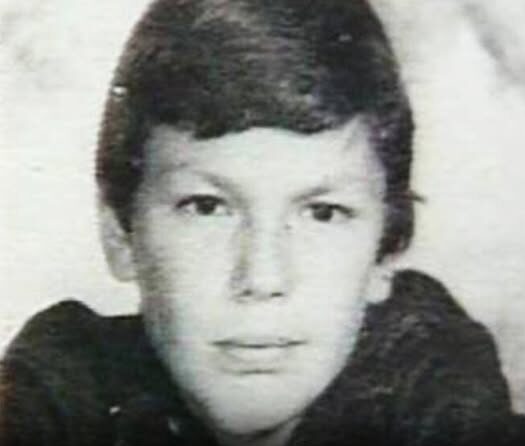He looked like any other little boy—dark eyes, quiet smile, and a touch of shyness. Born in El Paso, Texas, in 1960, no one could have predicted that this innocent child would grow up to become one of the most feared figures in American criminal history.
He was the youngest of five in a working-class Mexican American family. His mother worked long hours in a shoe factory, while his father, a former soldier, ruled the home with iron discipline and unpredictable anger. Friends remembered the boy as withdrawn and silent, a child who kept to himself. Behind closed doors, however, his world was filled with violence and fear.
By the age of six, he had already suffered several serious head injuries from beatings—damage that led to temporal lobe epilepsy. As punishment, his father would sometimes tie him to a cemetery cross overnight, leaving him alone among the graves.
By ten, he had turned to alcohol and drugs. As a teen, he roamed the El Paso desert at night, carrying his father’s rifle and shooting small animals. When the hunt ended, he would sometimes mutilate the remains and feed them to his dog.
At fifteen, his life took a devastating turn. His cousin Miguel, a Vietnam veteran who showed him disturbing war photos, shot his wife in front of him during an argument. That single moment shattered whatever innocence remained.
Continue reading on next page…
He dropped out of school, became increasingly isolated, and began spending nights spying on women with his brother-in-law. By his early twenties, he had moved to California—addicted to cocaine, surviving on theft, and drifting between Los Angeles and San Francisco. Experts would later describe him as a “created” psychopath: shaped by trauma, neglect, and violence.
In 1984, his darkness finally exploded into full view. His first known victim was nine-year-old Mei Leung, found murdered in the basement of her San Francisco apartment building. Months later, he killed again—79-year-old Jennie Vincow—marking the beginning of a series of crimes that would horrify California.
Between March and August 1985, the state was gripped by fear. The unknown killer, dubbed “The Night Stalker,” broke into homes at random, killing men, women, and children. His attacks were brutal and unpredictable—victims were shot, stabbed, or bludgeoned. Many were also assaulted, and he often left behind signs of his obsession with Satanism: pentagrams on walls, and symbols carved into skin.
The breakthrough came when a 13-year-old boy spotted the killer’s car and helped authorities trace a fingerprint that matched a drifter named Richard Ramirez. His photo was released to the public, and the next day, Los Angeles residents recognized him on the street. A crowd chased him down and held him until police arrived—ending months of terror.
During his 1988 trial, Ramirez showed no remorse. He smiled, mocked the victims’ families, and even shouted “Hail Satan!” in court. When sentenced to death, he smirked and said, “Big deal. Death always went with the territory.”
Richard Ramirez spent over two decades on death row before dying of cancer in 2013. He never expressed regret.
Looking back at his childhood photos, it’s hard to reconcile the shy boy from El Paso with the monster he became. His story remains one of the darkest reminders of how violence, neglect, and trauma can twist a life beyond recognition.

What do you think drives someone to such darkness — nature, nurture, or both? Share your thoughts and join the discussion below.
